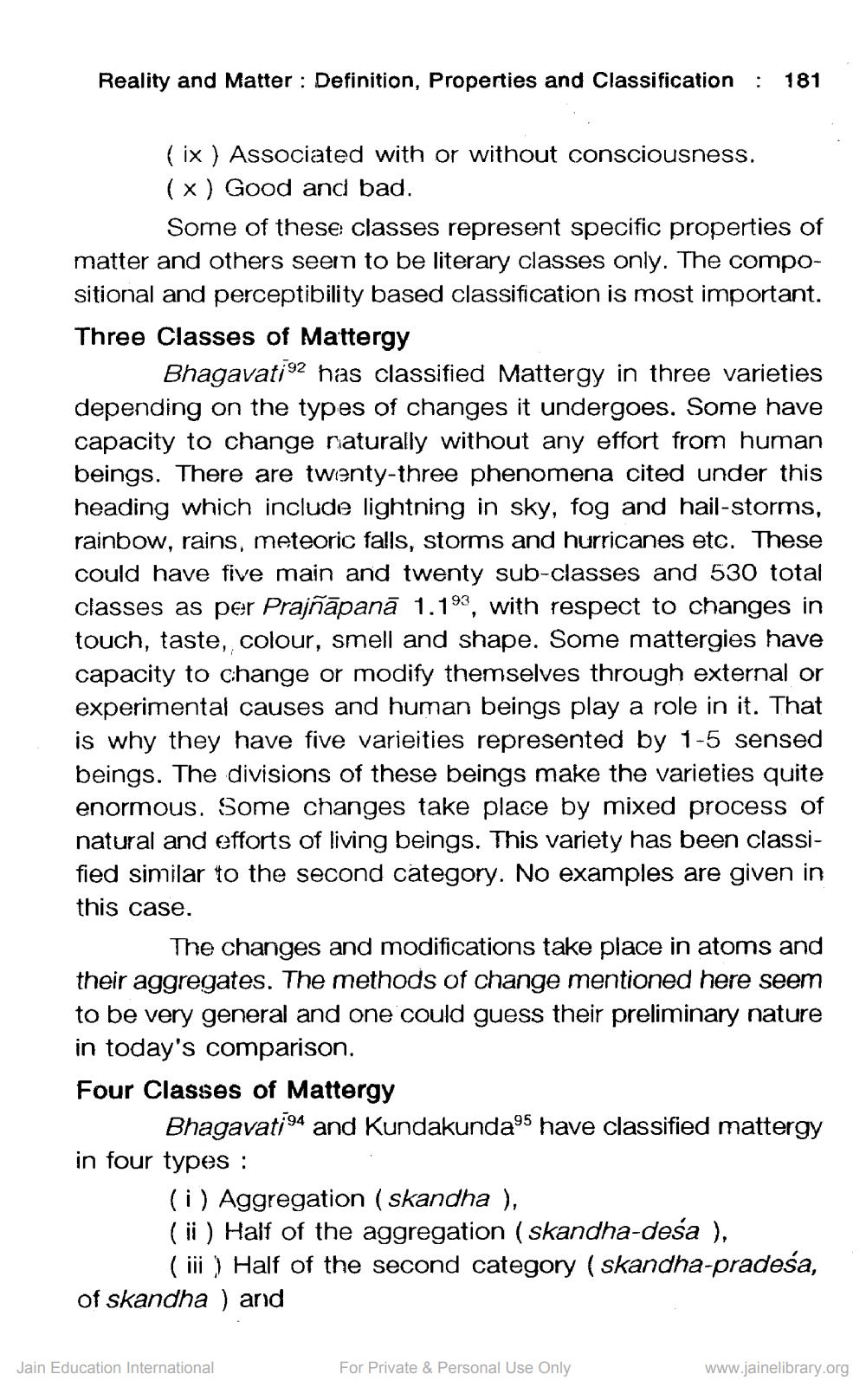________________
Reality and Matter : Definition, Properties and Classification : 181
(ix) Associated with or without consciousness. (x) Good and bad.
Some of these classes represent specific properties of matter and others seern to be literary classes only. The compositional and perceptibility based classification is most important. Three Classes of Mattergy
Bhagavati92 has classified Mattergy in three varieties depending on the types of changes it undergoes. Some have capacity to change naturally without any effort from human beings. There are twenty-three phenomena cited under this heading which include lightning in sky, fog and hail-storms, rainbow, rains, meteoric falls, storms and hurricanes etc. These could have five main and twenty sub-classes and 530 total classes as per Prajñāpanā 1.193, with respect to changes in touch, taste, colour, smell and shape. Some mattergies have capacity to change or modify themselves through external or experimental causes and human beings play a role in it. That is why they have five varieities represented by 1-5 sensed beings. The divisions of these beings make the varieties quite enormous. Some changes take place by mixed process of natural and efforts of living beings. This variety has been classified similar to the second category. No examples are given in this case.
The changes and modifications take place in atoms and their aggregates. The methods of change mentioned here seem to be very general and one could guess their preliminary nature in today's comparison. Four Classes of Mattergy
Bhagavati94 and Kundakunda95 have classified mattergy in four types :
(i) Aggregation ( skandha ), (ii) Half of the aggregation (skandha-desa ),
(iii) Half of the second category (skandha-pradeśa, of skandha ) and
Jain Education International
For Private & Personal Use Only
www.jainelibrary.org




